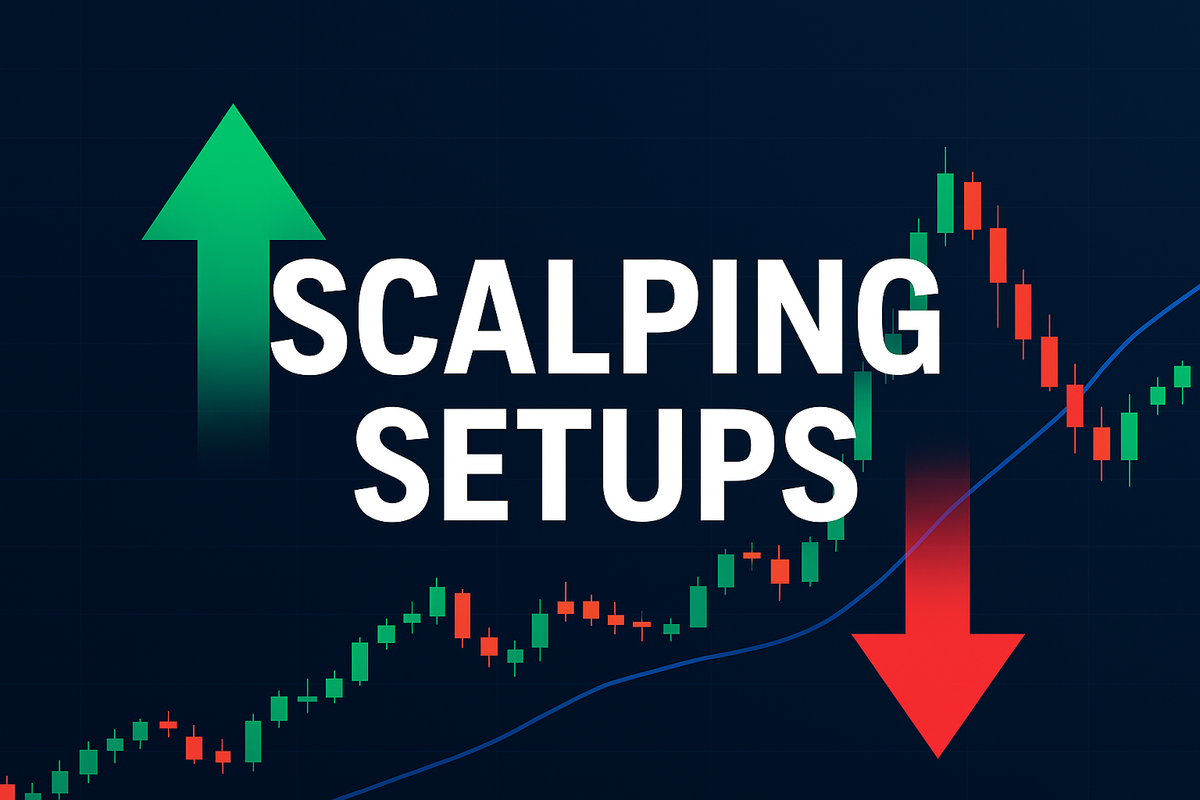10 Scalping Trading Setups for Quick Wins
Scalping trading is all about quick entries, small gains, and disciplined exits. Discover 10 powerful scalping setups from moving averages to VWAP and Fibonacci levels that can help you trade with speed and precision.

Trading in financial markets requires strategy, discipline, and quick decision-making. Many traders focus on small, incremental gains throughout the day rather than waiting for large market movements. However, to achieve this, it is important to first learn about the scalping trading setup.
Scalping trading is an approach where traders make many quick trades in a day, aiming to earn small profits on each trade rather than waiting for large moves.
Here are the ten best scalping trading setups that you can consider:
Moving Average Crossover Setup
Use the 9-period and 21-period exponential moving averages (EMAs). If you notice the shorter EMA crossing the longer EMA, you can consider it a buy setup, and when it moves below, it is a sign of a sell setup. It is better to use moving averages in liquid markets with strong price momentum.
Support and Resistance Bounce Setup
Focus on price behaviour around key support and resistance levels. In scalping, even a minor bounce from these zones can generate quick profits. When the price nears strong support and shows rejection through candlestick wicks or higher volumes, it creates a short-term buying opportunity.
Similarly, rejection at resistance levels opens room for short trades. Unlike long-term strategies, you should avoid waiting for large moves. Instead, take small price rejections for rapid gains. This approach requires close observation of one-minute or five-minute charts to capitalise on these short bursts of price action.
Breakout and Pullback Setup
Scalping breakouts works effectively when you combine it with pullback confirmations. Wait for the price to break over resistance or below support to retest the broken level. If the level holds during the pullback and the price resumes in the breakout direction, you can take entry.
VWAP Reversal Setup
The Volume Weighted Average Price (VWAP) helps you assess whether the price trades at a fair value. In scalping, you can use VWAP as a mean reversion tool. When the price stretches far from VWAP, it often snaps back.
For example, if price trades significantly above VWAP but volume weakens, you may scalp short positions targeting a quick return to VWAP. Conversely, if the price drops far below VWAP, scalping longs back to the mean can provide fast profits. This works best with highly liquid instruments.
Range-Bound Scalping Setup
Scalping within tight ranges is effective when markets lack clear trends. Try to identify established price zones where the market bounces frequently between support and resistance.
Every contact near support offers a chance to scalp buys, while touches near resistance provide quick sell opportunities.
RSI Divergence Setup
RSI divergence offers an opportunity when price momentum weakens. When the price makes a new high but the RSI forms a lower high, it shows bearish divergence and suggests short opportunities.
On the other hand, if price hits a lower low but RSI makes a higher low, it is a sign of bullish divergence ideal for quick longs. This setup works best on one-minute or five-minute charts for profits.
Bollinger Band Bounce Setup
Bollinger Bands are highly useful in scalping when you trade price bounces. When the price touches or moves outside the upper band, it often retraces back inside the bands, creating short opportunities.
Similarly, touching or moving below the lower band signals quick buying setups. Since scalping depends on small profits, you should target the mid-band or nearby price zones instead of waiting for large moves.
Order Flow Scalping Setup
Scalping using order flow requires you to monitor the order book. By watching live buy and sell orders, you can detect when aggressive buyers or sellers enter the market.
For example, if there is a sudden spike in large buy orders near support, it is a sign of a short-term rally that provides a scalping entry. Similarly, visible heavy sell orders around resistance can indicate a quick short opportunity.
Bollinger Squeeze Setup
A Bollinger squeeze shows low volatility before a possible breakout. When the bands contract, you can expect a move once the price exits the bands. It is recommended to enter the breakout direction and set a stop loss slightly inside the band to manage risk.
As a scalper, you can benefit from the initial burst of volatility, which often generates immediate profits. Watch for confirmation from volume and momentum to avoid false breakouts. This setup works well on high-liquidity indices or actively traded stocks.
Fibonacci Levels
Fibonacci retracements are widely used to predict intraday turning points. In scalping, apply Fibonacci levels on short timeframes to identify quick entry zones. For example, when the price retraces to 38.2% or 61.8% after a short move, it provides strong reactions.
You can scalp these pullbacks for small gains before the larger trend resumes. It is best to combine Fibonacci with candlestick confirmations like rejection wicks or engulfing candles to strengthen trade accuracy.
Wrapping Up
Scalping can offer small, frequent profits in Indian markets if done with discipline, good setups, and strict risk control. The ten setups above are not “get rich quick” tricks but practical methods.
You should test them on your own instruments, figure out which ones suit your temperament, and adapt to market conditions. Consistency, cost control (brokerage, spread), and emotion management are more important than any single strategy.




